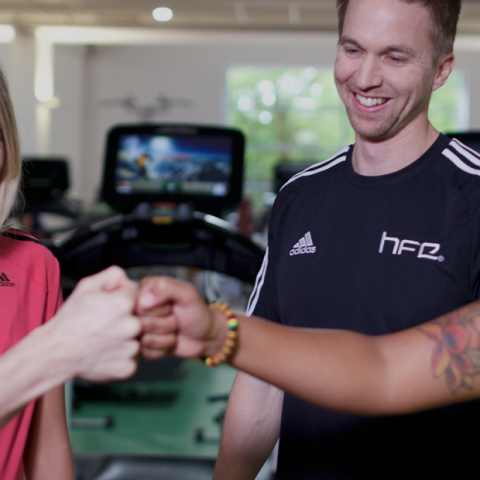Podiatry is defined as “the treatment of feet” and is largely concerned with the variables that influence walking style and gait. Traditionally, if a person exhibits gait complications, podiatry, or podiatrists, usually recommend supportive footwear to be worn to help re-align the dysfunctional foot. In almost any other facet of human kinesiology, biomechanics and movement, external support is frowned upon because of its detrimental effect on the body’s own natural stabilising mechanisms, so why not gait?
The primary justification for corrective insoles and supportive footwear is based on the notion that by placing the foot in a neutral position, its stability is enhanced and the joints which are directly influenced by the foot’s position, will also be realigned and therefore able to perform their role more effectively.
More specifically, when the foot is in a neutral position, the ankle, knee, hip and spine are less likely to be displaced, and so movement should occur more efficiently, and with less compensatory movement elsewhere. For example, when the foot over-pronates, the knee moves medially and increases the lateral stresses placed on the collateral and cruciate ligaments, particularly the medial collateral ligament. Over-time, the tissue tolerance of these ligaments will be reduced, resulting in inflammation and pain.
The use of corrective insoles to improve bipedal movement is by and large a western approach which does not truly consider inter-individual variability. In the east, footwear is worn to a much lesser extent and the prevalence of knee, hip, back and shoulder problems are only around 3% of those found in the in the US and Europe. Moreover, many credible studies have also concluded that footwear is in many cases the cause of these problems, rather than the solution to them.
More specifically, footwear:
• reduces proprioception and inhibits sensory feedback from the plantar surface (sole) of the feet
• desensitises the mechanoreceptors on the plantar surface of the feet
• leads to atrophy of the foot’s stabilising muscles
• can impede the natural development of feet in children up to the age of 6
• can slow the ossification of the foot’s cartilage in the 28 bones which form the adult human foot; thus increasing the risk of fractures
• reduces vertical shock by less than 10% at best, begging the question whether it is of any real value at all?
• makes natural gait almost impossible, increasing the likelihood of gait complications at some stage during life
• allows for excessive movement inside the shoe which increases the risk of blisters, bunions, calluses and diabetic ulcers
• restricts circulation by constricting and compressing the blood vessels on the surface of the foot
To summarise the use of footwear during day-to-day activities, and indeed while exercising should be evaluated by any serious exercise enthusiast wanting to maximise their biomechanical efficiency. Furthermore, those who already have gait complications, should also consider the possibility of exercising in a semi or unsupported environment in order to enhance their innate stabilising mechanisms.
Disclaimer
This article contains general information about medical conditions and treatments. The information is not advice, and should not be treated as such.


